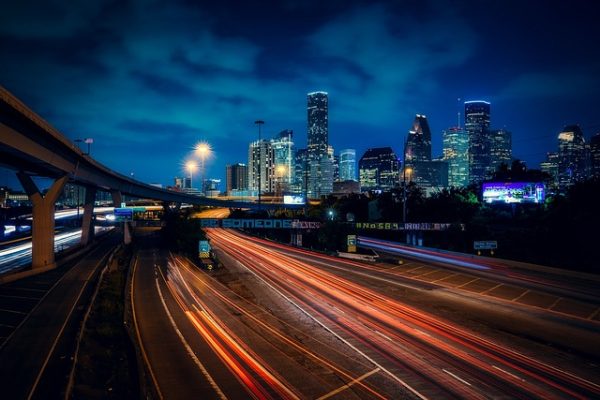
Covering more than 268,000 square miles, Texas presents a landscape of diverse terrains and sprawling cities, making transportation an essential aspect for visitors and new residents alike. The state offers everything from expansive highways ideal for road trips to sophisticated public transportation networks in its major urban centers. This detailed guide will help you navigate the Lone Star State with ease, showcasing the best ways to traverse its vast distances and varied locales.
As you plan your journey through Texas, consider the wide range of travel options tailored to suit different preferences and needs. Whether you’re looking for the independence of driving along scenic routes, the convenience of hopping on a city bus, or the eco-friendly choice of biking through metropolitan bike lanes, Texas has a solution. Each mode of transport provides a unique perspective on the state’s rich cultural tapestry and picturesque landscapes, ensuring that your travel experience is as rewarding as the destinations themselves.

1. Driving: Embracing the Open Road
Driving remains the quintessential way to experience Texas. The state’s numerous highways connect every corner, offering breathtaking views from the Chihuahuan Desert to the lush forests of East Texas.
Detailed Tips for Drivers:
- Vehicle Choice: Consider the purpose of your trip when renting a car—SUVs for family comfort, sedans for economical long-distance travel, or convertibles for scenic coastal drives.
- Navigational Tools: Equip yourself with GPS or smartphone apps to navigate effectively, especially in remote areas where cell service might be spotty.
- Toll Roads: Expect to see many toll roads around major cities like Austin, Dallas, and Houston. Consider using a toll tag to streamline your travel. Additionally, take opportunities to exit and explore charming small towns for a true taste of Texas culture.
2. Public Transportation: Urban Connectivity
Texas’ major cities have developed comprehensive public transit systems that are vital for both residents and tourists.
Exploring City Transit:
- Houston METRO: Includes not only buses and light rail but also METRORapid and commuter services, ideal for daily commutes or exploring attractions like the Museum District.
- DART in Dallas: Covers an extensive network with buses, light rail, and a streetcar in downtown, connecting cultural hotspots like Deep Ellum and Bishop Arts District.
- Austin’s Capital Metro: Known for its eco-friendly initiatives, it features electric buses and the MetroBike program alongside its rail and bus services.
- San Antonio VIA: Provides comprehensive coverage with special tourist routes like the VIVA line, which connects major sights including the Alamo and San Antonio Missions.
Public transportation in these cities not only reduces traffic congestion but also helps in minimizing your carbon footprint while exploring urban centers.
3. Cycling and Walking: Sustainable Travel Options
Texas cities are increasingly accommodating cyclists and pedestrians, with Austin leading the charge as a bike-friendly city.
Maximizing Non-Motorized Travel:
- City Bike Programs: Dallas, Houston, and Austin offer bike-sharing systems, available through apps, which let users pick up and drop off bicycles at various stations.
- Scenic Routes: Take advantage of the numerous parks and dedicated bike trails, such as the Katy Trail in Dallas or Buffalo Bayou in Houston.
- Safety Gear: Always wear appropriate gear, including helmets and reflective clothing, to ensure safety while cycling or walking in busy areas.
4. Air Travel: Fast Tracks Across the State
Air travel is a time-saving option for reaching distant Texas cities or traveling out of state. Each major city is served by at least one airport, with frequent domestic and international flights.
Major Airports and Services:
- DFW International and Houston’s George Bush Intercontinental: Serve as the main international gateways, with direct flights to numerous global destinations.
- Regional Airports: Smaller airports like San Antonio International and El Paso International offer domestic flights and limited international services, useful for quick trips.
5. Ride-Sharing and Taxis: Flexible Urban Travel
Ride-sharing apps like Uber and Lyft provide a flexible and often cost-effective alternative to car rentals, especially for shorter distances or if you plan to drink alcohol.
Considerations for Ride-Sharing:
- Availability: Check the app for estimated wait times, which can vary widely between downtown areas and outskirts.
- Pricing: Be aware of surge pricing during high-demand periods, such as during major events or peak hours.
6. Long-Distance Buses and Trains: Scenic and Affordable
For those who prefer ground to air travel, long-distance buses and trains offer a scenic way to see the state without the stress of driving.
Bus and Train Tips:
- Greyhound and Megabus: Offer extensive routes connecting major Texas cities with amenities like Wi-Fi and at-seat power outlets.
- Amtrak’s Texas Eagle: Travels between Chicago and San Antonio, with stops in major Texas cities, offering a unique view of the state’s diverse landscapes.
Conclusion
Whether you’re cruising along a remote West Texas highway, catching a city bus to downtown Houston, or biking along Austin’s Lady Bird Lake, Texas offers myriad transportation options tailored to every type of traveler. Plan ahead, consider your preferences and safety, and you’ll find traveling around Texas both enjoyable and efficient.


